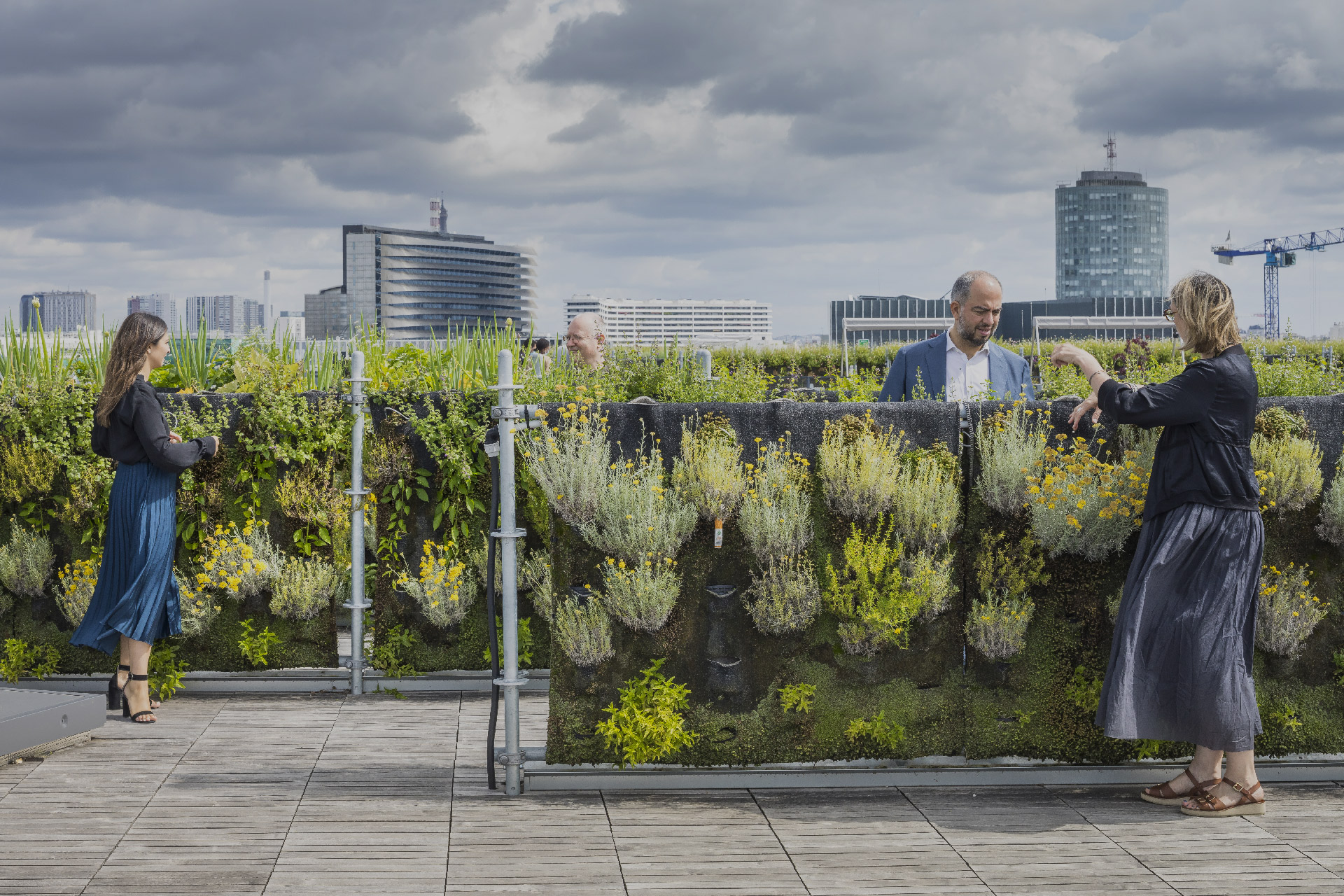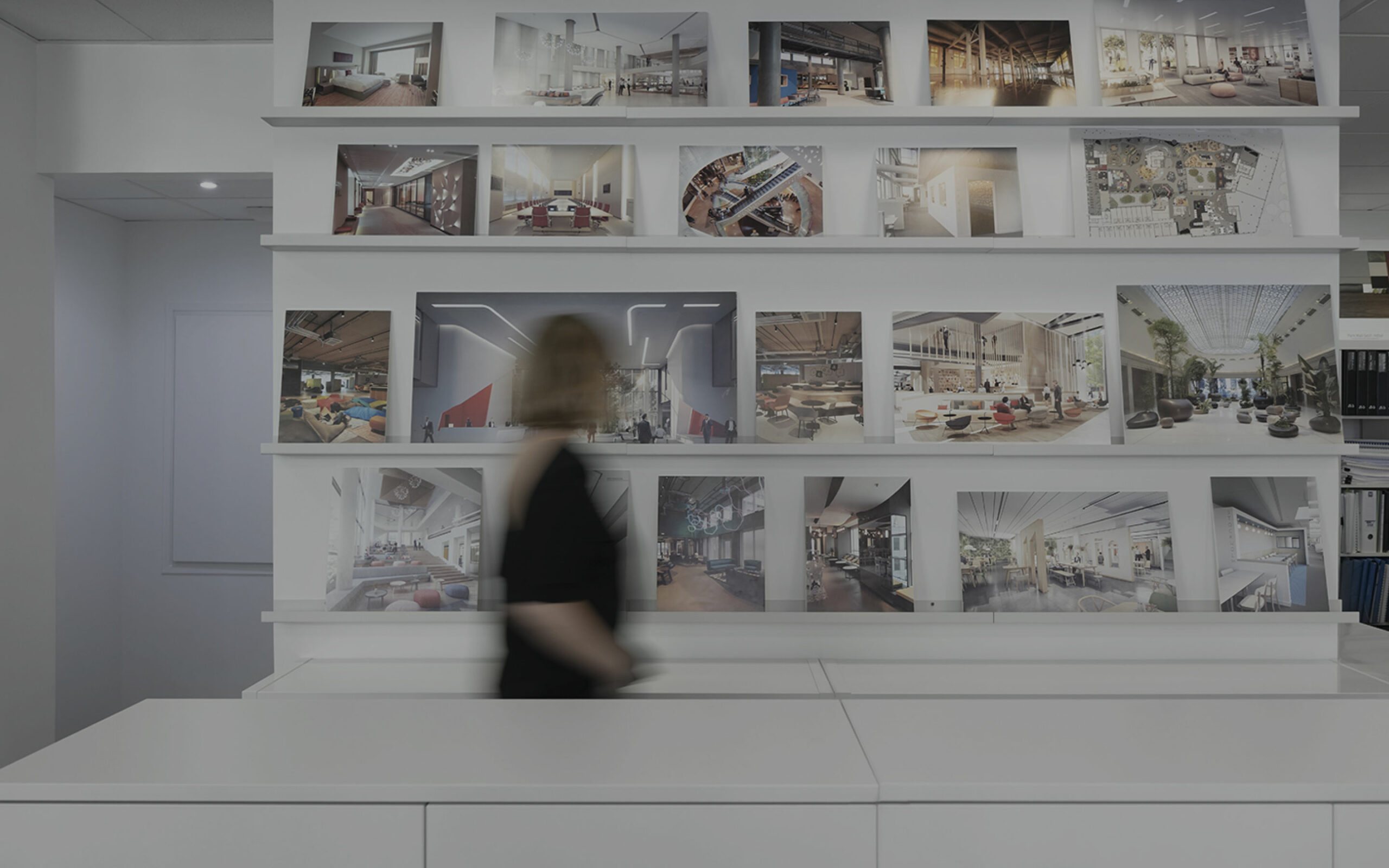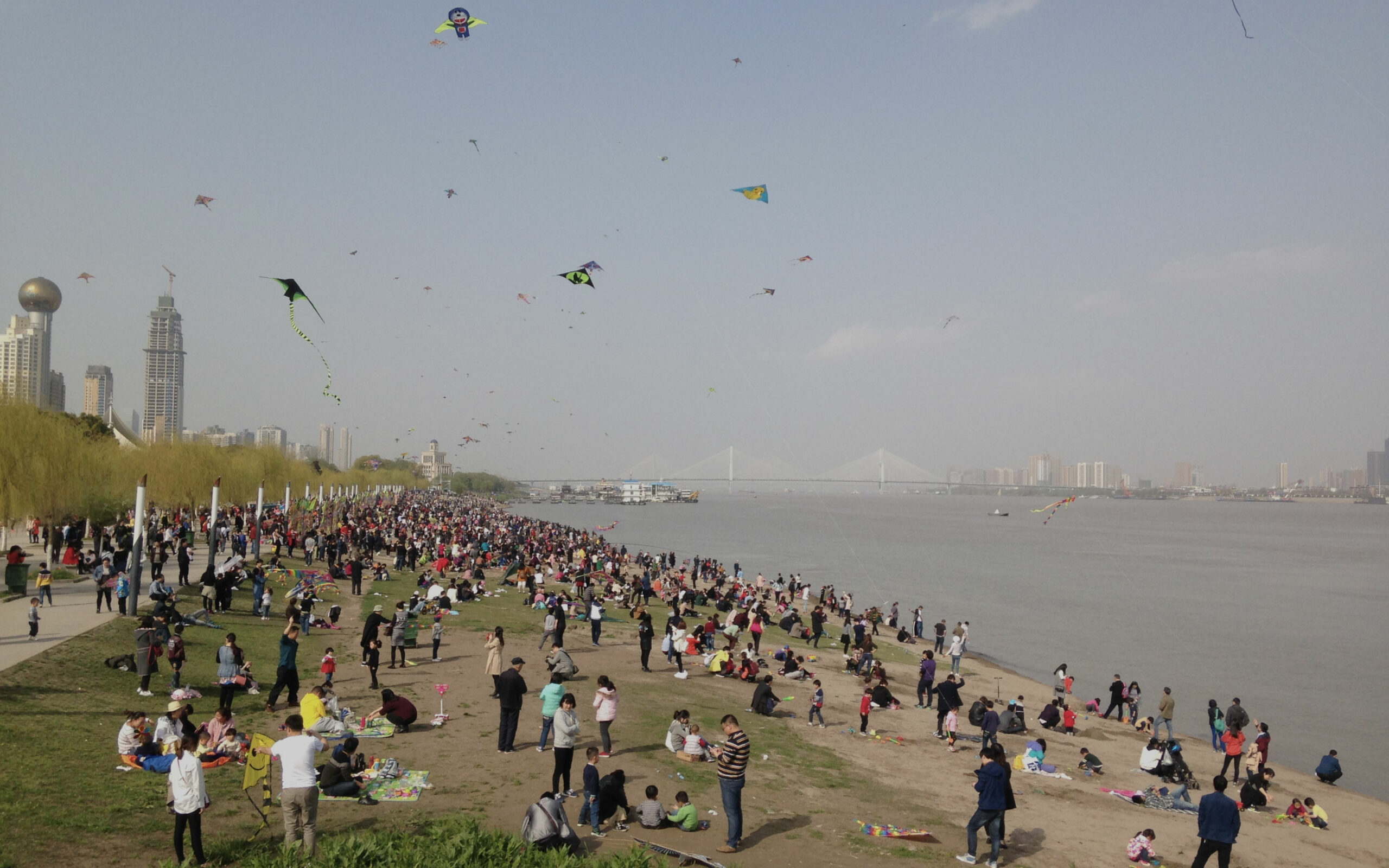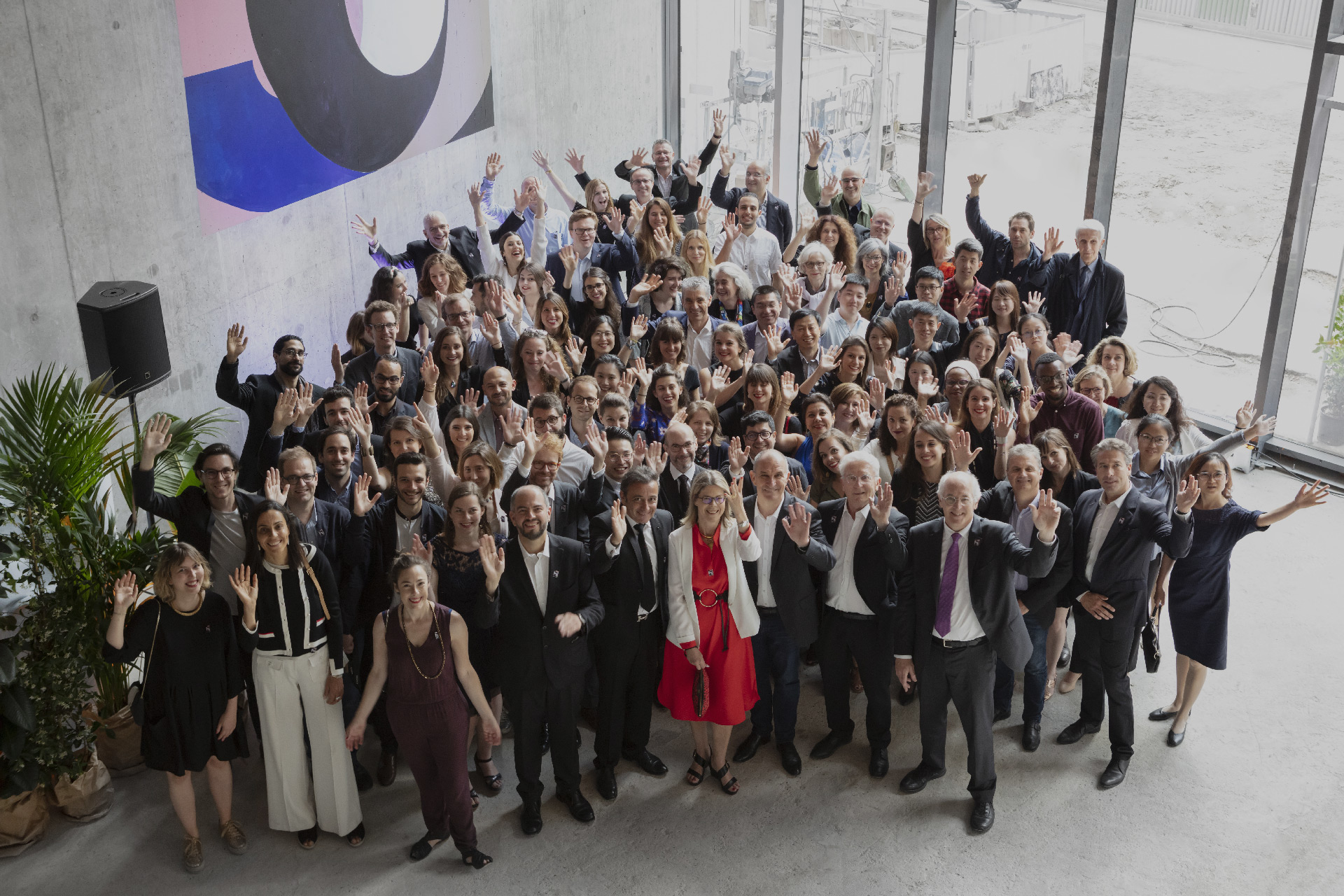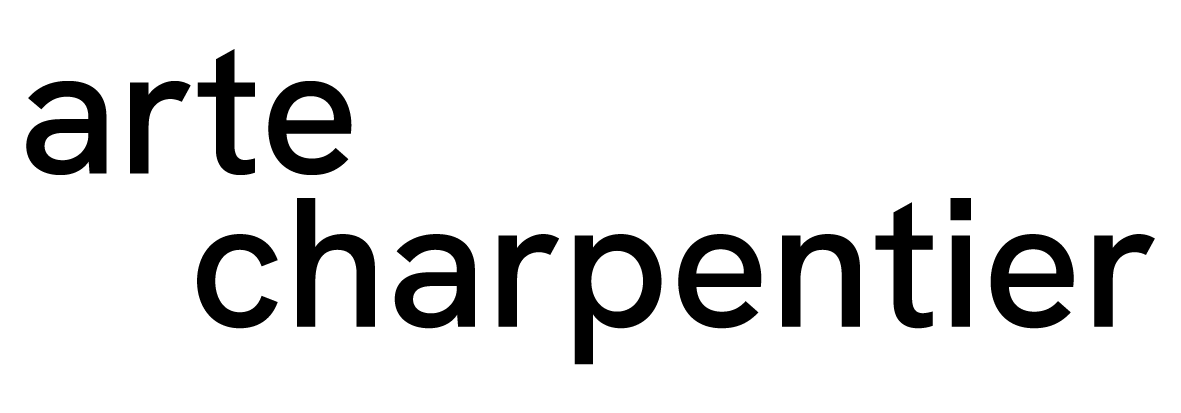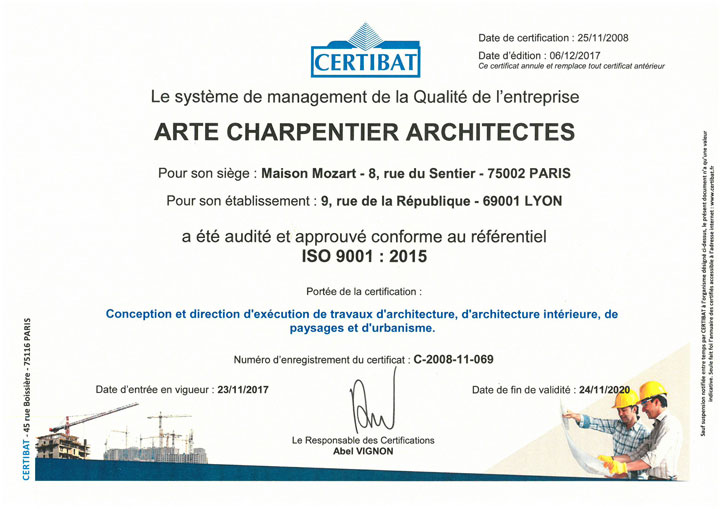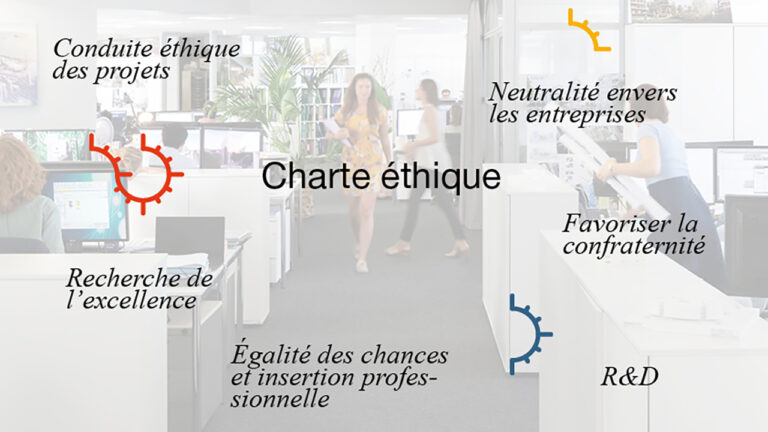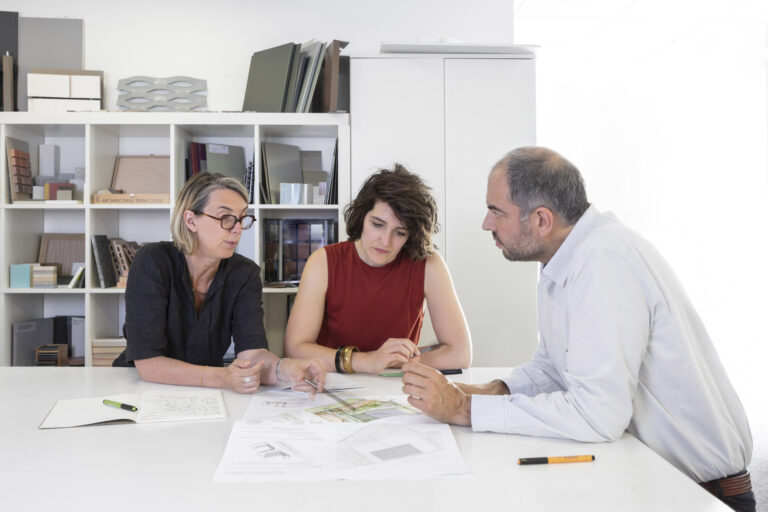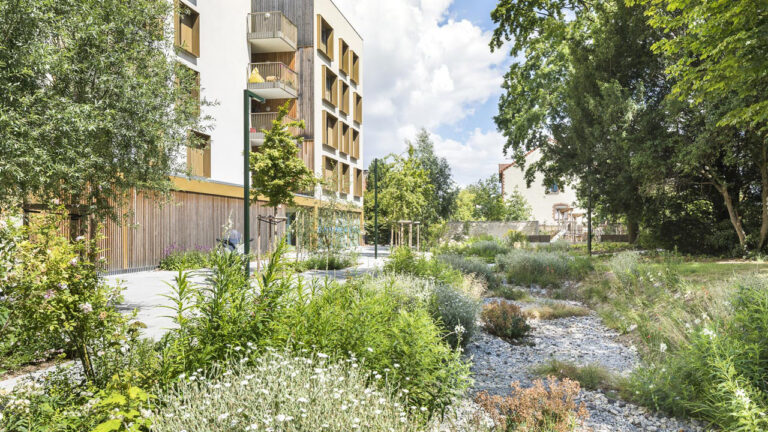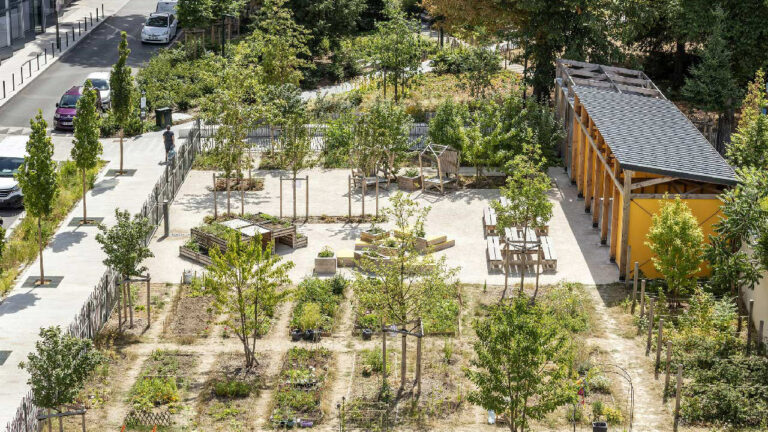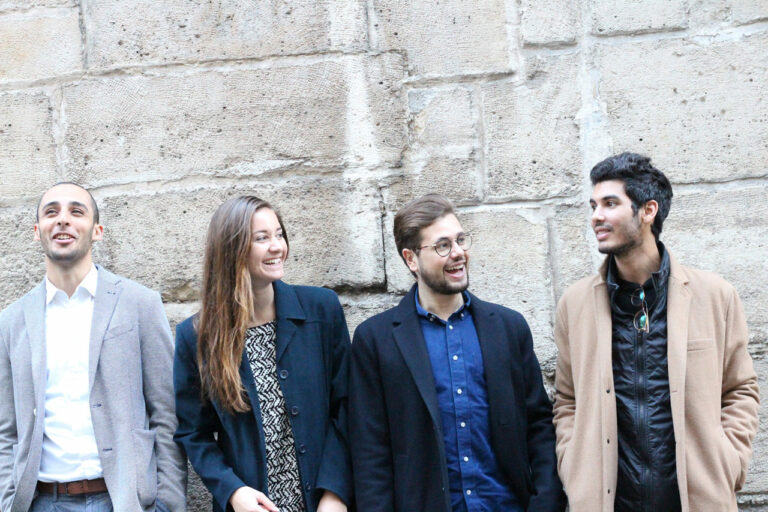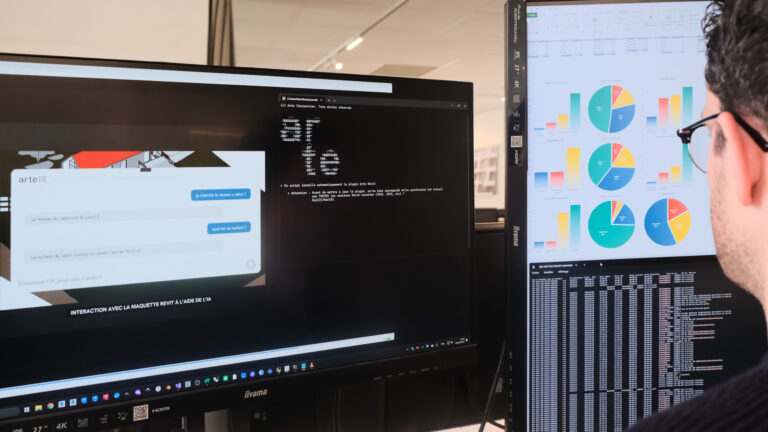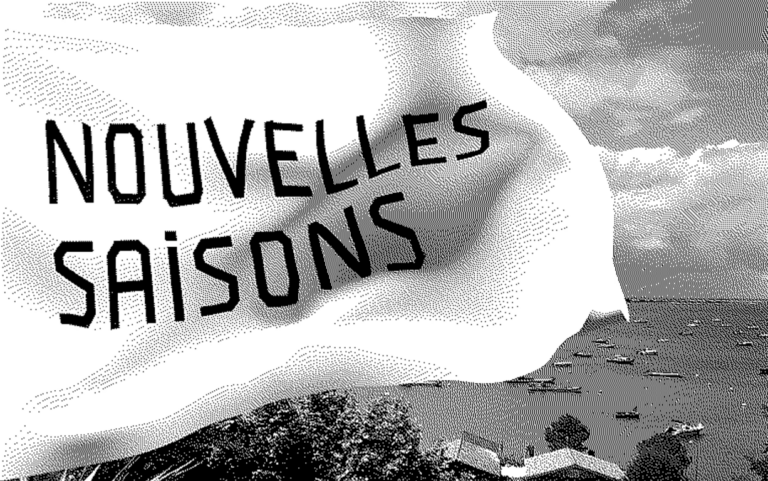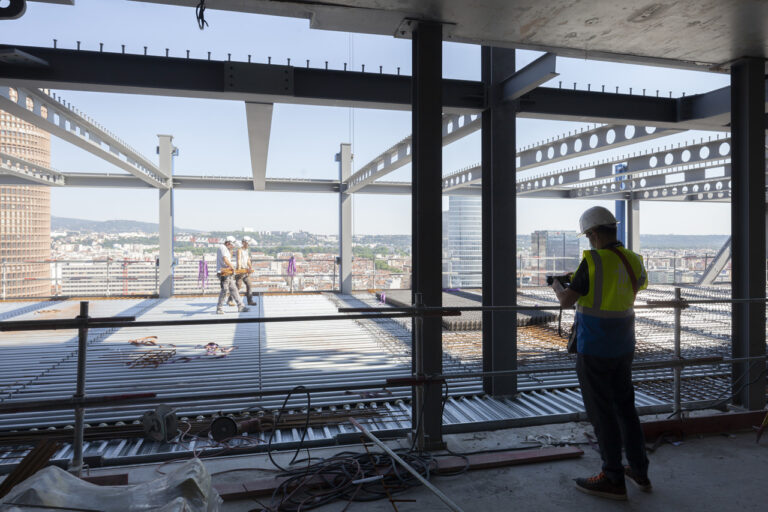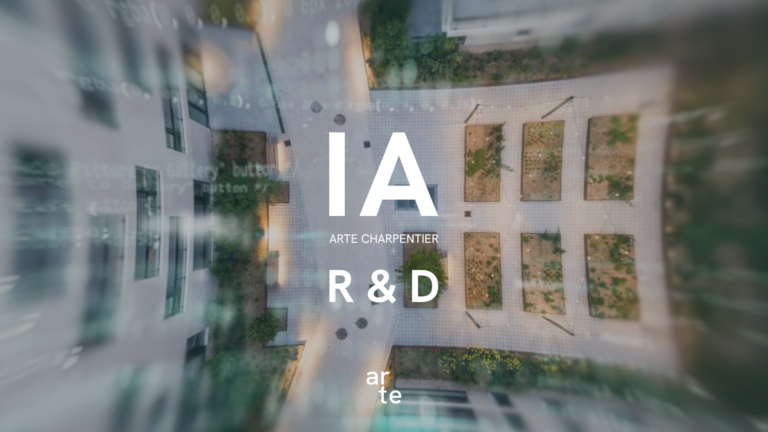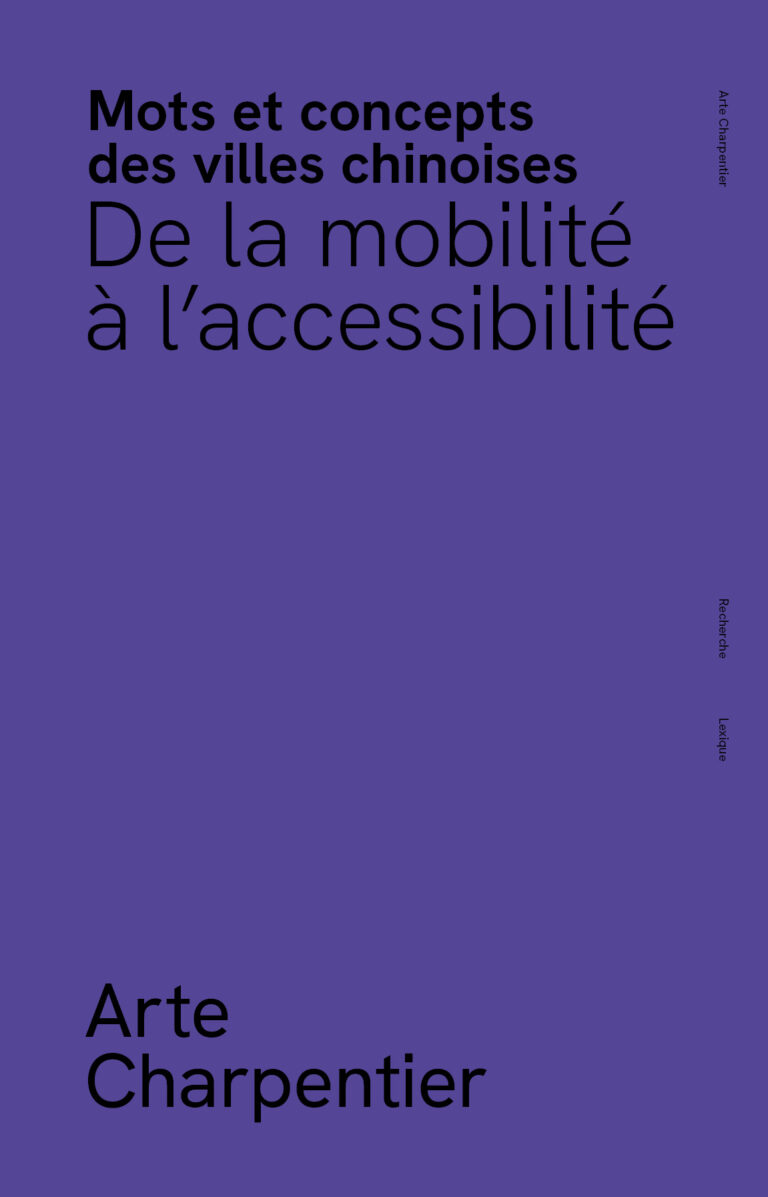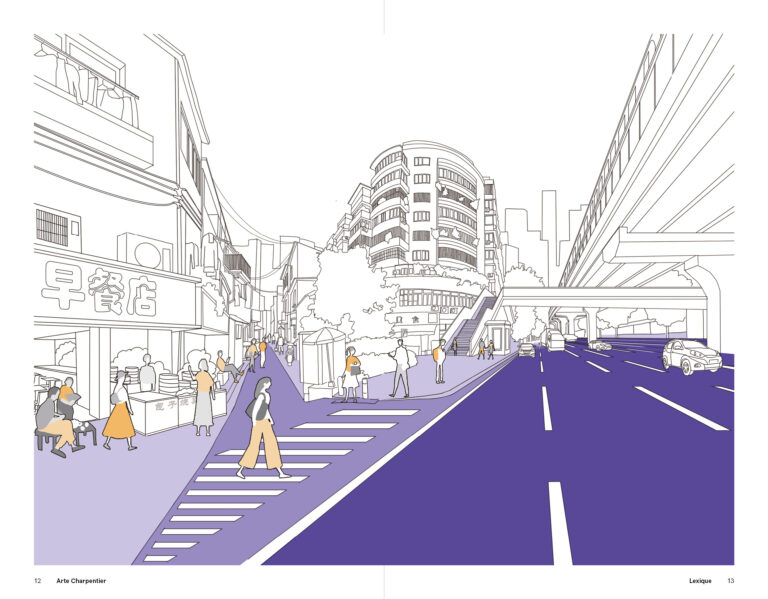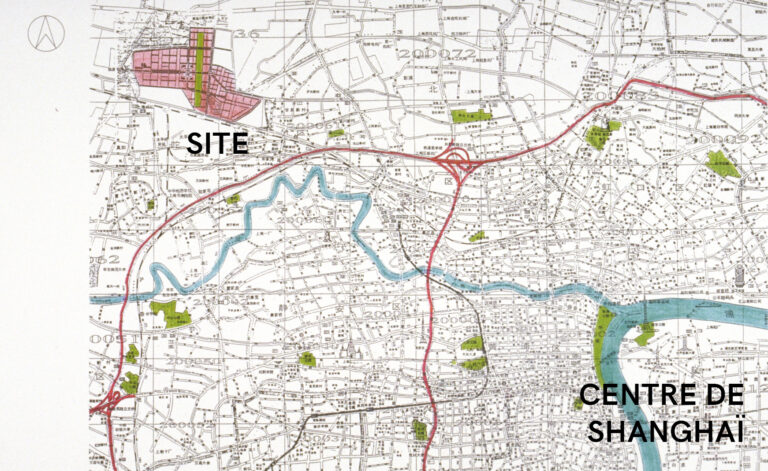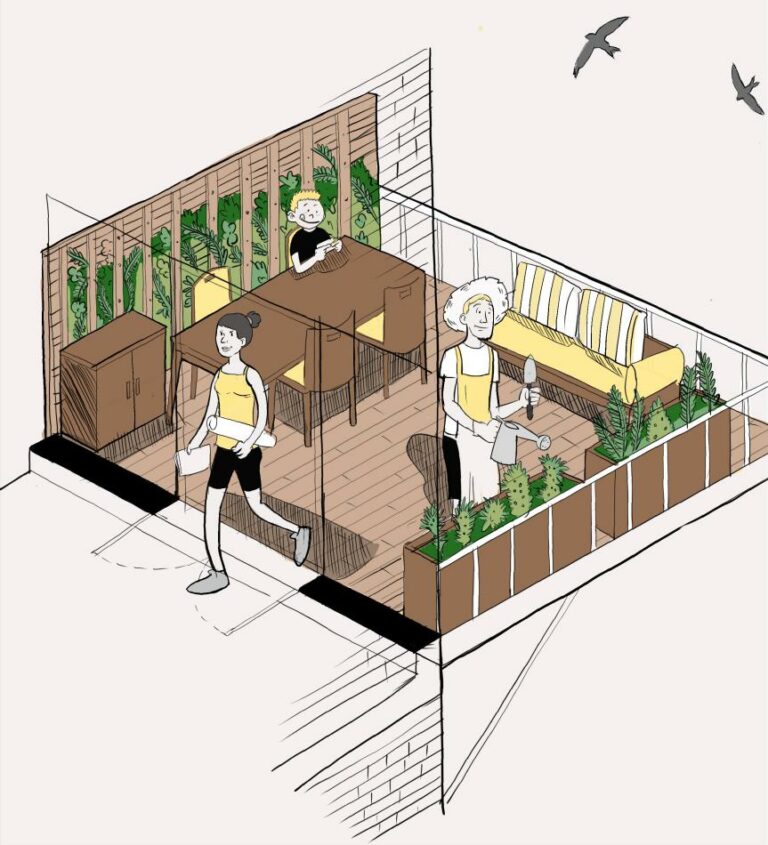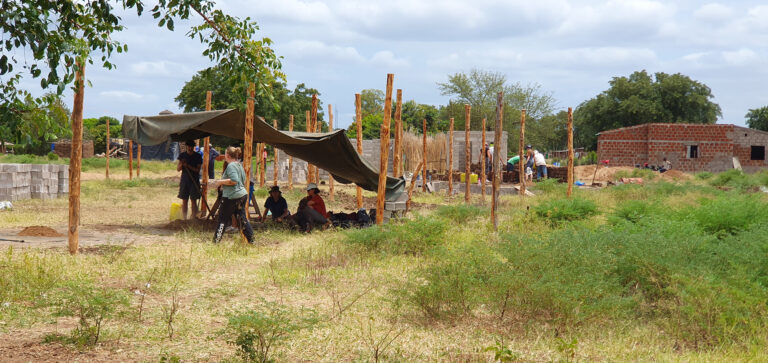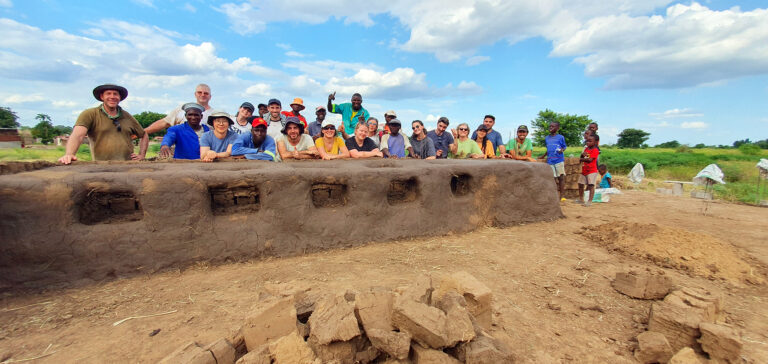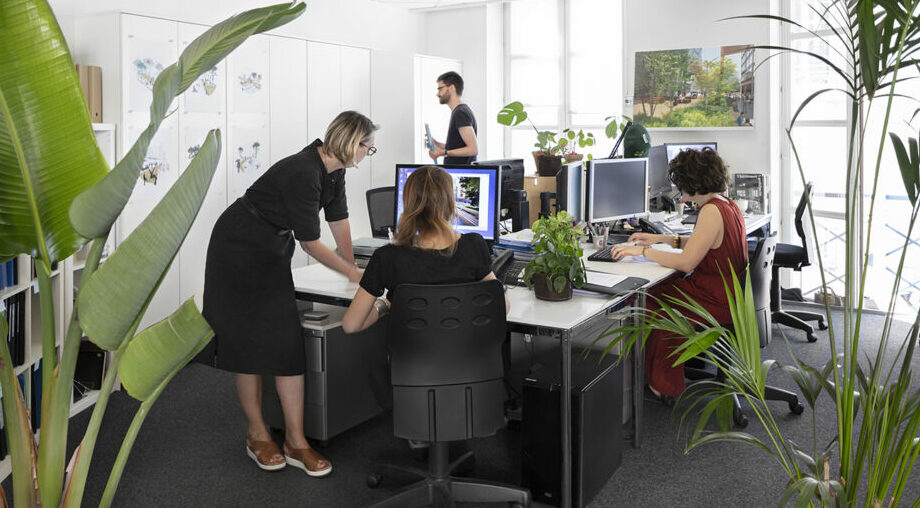
The internationally-recognised ISO standard defines the steps required for a company to adopt a management system and an organisation to meet its requirements. The ISO 9001 certification focuses on quality management, and the ISO 14001 concerns the management of the company’s environmental responsibility.
Arte Charpentier and Environmental Responsibility Management [ISO 14001]
The implementation of an ISO approach requires strong commitment on behalf of the management, and an internal organisation that promotes the continuous improvement of practices for better customer satisfaction. The quest for the 14001 certification is a major collective commitment.
For several years, the Arte Charpentier Architectes agency has been committed to this approach, relying on work that has been carried out for nearly 15 years, in order to optimise the environmental impact of the agency itself, as a workplace, and to develop sustainable projects, designed by the team, for our customers.
Consequently, our methodology is deployed according to these 2 axes:
• the agency as a working tool;
• our projects, as a product of our work.
In early 2021, aware and convinced that the areas of improvement can only be effective if the strategy comes from employees as much as from the flawless commitment of management, we organised a workshop with volunteers and affected employees, to stimulate the implementation of the approach.
Obtained in 2021 (combined with the ISO 9001 approach), and valid for 3 years, the ISO 14001 certification is regularly audited to ensure that the agency is structured to deliver projects in compliance with its environmental responsibility. It covers all environmental aspects of its business (products and services) and is based on two principles:
• continuous improvement in environmental performance,
• regulatory compliance.
The environmental management system positions the company in a logic of sustainable development.
Our four professions – architecture, interior architecture, landscaping and urban planning – are at the heart of the creation of the living environment through the design of cities, places of residence, work and common life, and directly concerned by environmental concerns. The agency is aware of its responsibility and, in the continuity of its involvement in the ISO management approach, wished to pursue this new certification in order to achieve its ambitious environmental objectives.
Carried by ArteGreen, a collective of Artesians involved in defining and monitoring the agency’s sustainable development objectives, the priorities have been defined as a result of workshops on the optimisation to be considered in the operation of the agency, but also for the projects we deliver to our clients. Targets and indicators have been put in place, approved and supported by management.
This approach articulates, complements and informs the agency’s existing R & D approach, with cross-cutting themes that mutually enrich each other.
In addition, Artegreeners undergo targeted training to improve their knowledge in the environmental field.
In order to fully integrate this ethical process in the dynamics of the agency, the ArteGreen group regularly conducts information sessions with Artesians to foster awareness and overall skills.
For the agency, in order to implement our environmental strategy, we use a carbon footprint developed based on 2019 data, which serves as our starting point.
This report, which reflects a scientific approach, highlights what has already been done, and what remains to be implemented. This data, cross-referenced with the motivations and themes requested by ArteGreeners, highlights the priority challenges to be met: promoting recycling, educating everyone on good IT practices, reducing the carbon footprint by optimising our business travel, implementing a frugal purchasing policy, etc.
For projects, making the right choice for the agency’s strategic environmental axes requires an analysis of the issues at the local, national and international levels. The evolution of the real estate market shows the extent to which the consideration of sustainable development is now essential. Who is investing in projects that are not part of the low-carbon approach? The world of real estate and the world of finance are changing course, with the establishment of application decrees for more ethical financing at the European level.
Here again, we are basing ourselves on internationally-ratified data: the 17 Sustainable Development Goals set by the UN for the 2030 Agenda. 50% of these objectives are directly related to our urban planning, architectural and landscaping professions.
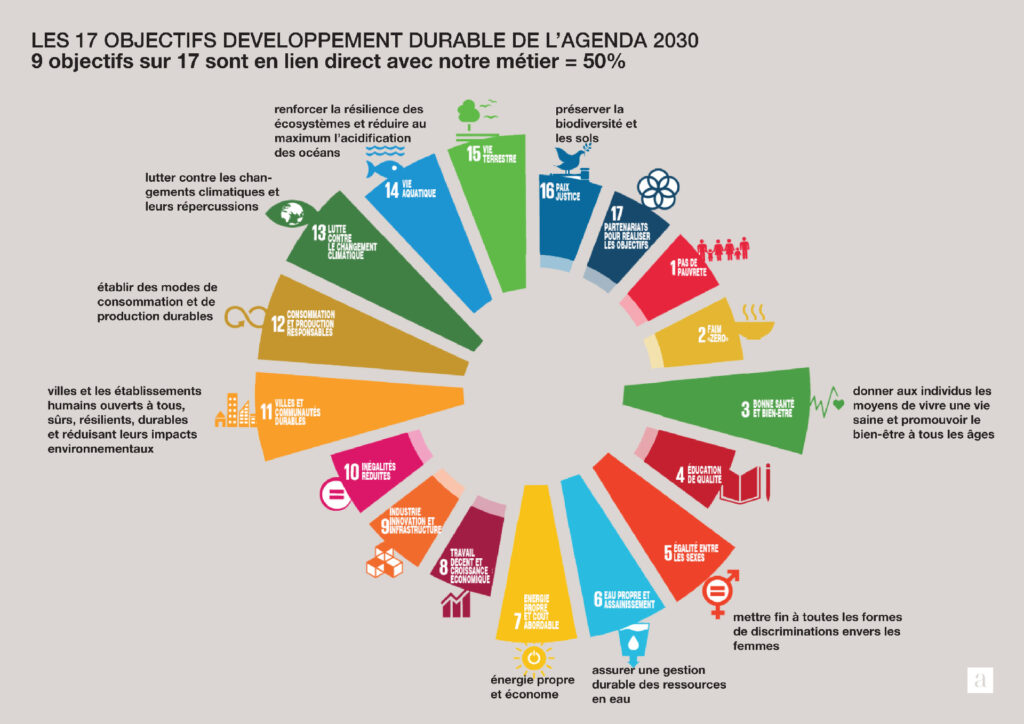
We cross-reference this data with the themes that motivate ArteGreeners, with the support of management, to highlight the priority challenges to be addressed, as part of a Low Carbon approach:
• Recycling and reuse: Arte Charpentier has begun an inventory of its built heritage in order to propose rehabilitation with added environmental and social value
• Ecodesign: promoting short supply chains, biosourced materials, energy savings, etc.
• Frugality and Innovation in uses: making well-thought-out projects that integrate the dimension of living things for the benefit of biodiversity and humans (biophilia). Making the city inclusive, creating new uses, designing flexible and reversible buildings, co-designing with users, because every time the dialogue is open, the projects are better accepted and appropriation can follow.
In order to boost this approach, we want to address at least one environmental challenge per project, which will aim to go further than the appropriate response to a “classic” environmental criterion. Looking forward means being able to anticipate better.
Nathalie Leroy, a landscaper and head of ArteGreen, together with the architect Antonio Frausto (both partners), explains the commitment:
In the context of our projects, from the outset, we propose ethical alternatives to the most widespread practices; we have for example drafted a Livr’Eau, which lists our quantified and tested practical solutions for the proper management of stormwater, which is both economical and sustainable.
The achievement of the ISO 14001 certification in 2021 for the first time, together with the renewal of ISO 9001, is the guarantee of the entire agency’s involvement in the realisation of our objectives in terms of sustainable development. Arte Charpentier Architects is committed to ArteGreen for a more sustainable environment!
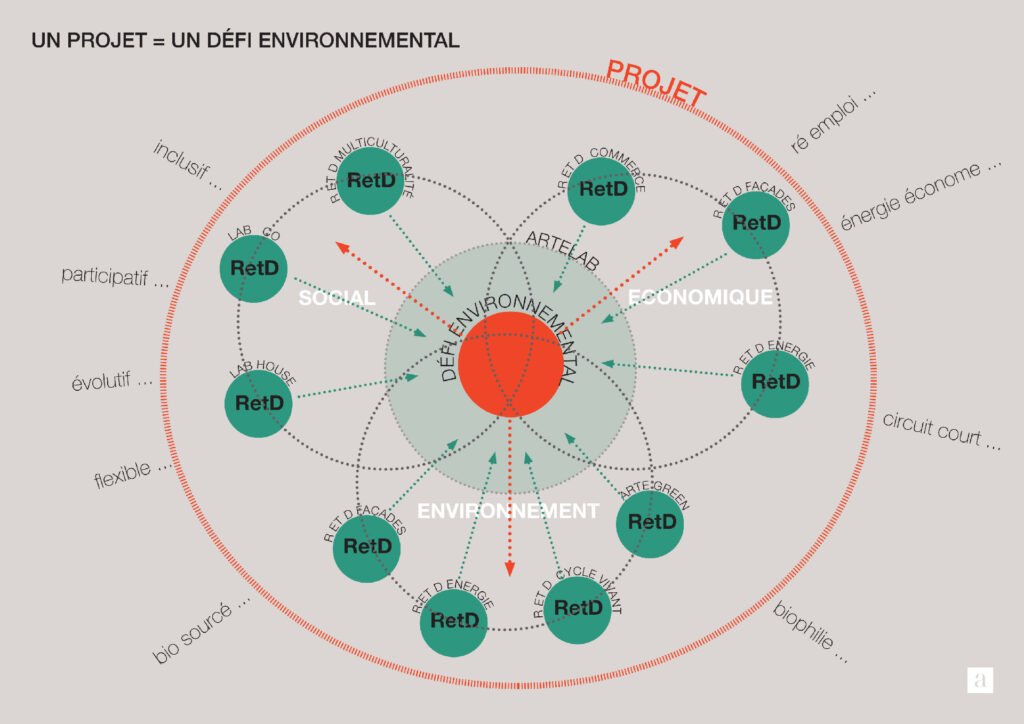
-
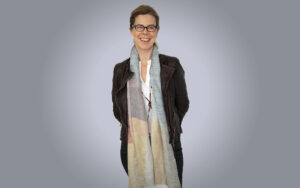
Stéphanie de Kervenoaël-Siac Architecte associée, Directrice des Ressources Humaines
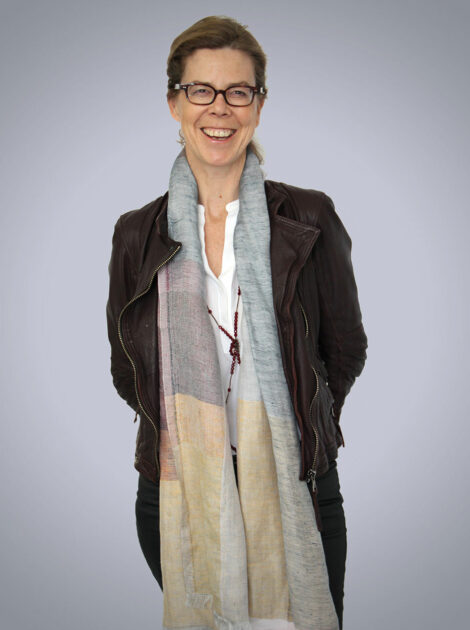
Directrice générale déléguée
FORMATION
Master de Management Urbain – E.S.S.E.C. (1996)
Architecte D.P.L.G – Ecole d’Architecture Paris-Villemin (1991)
-
